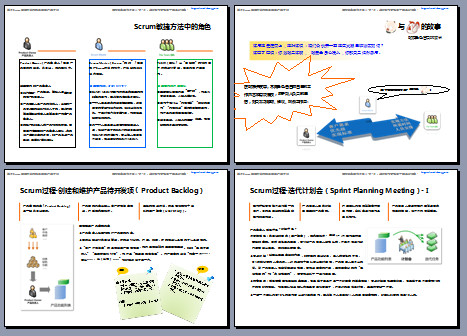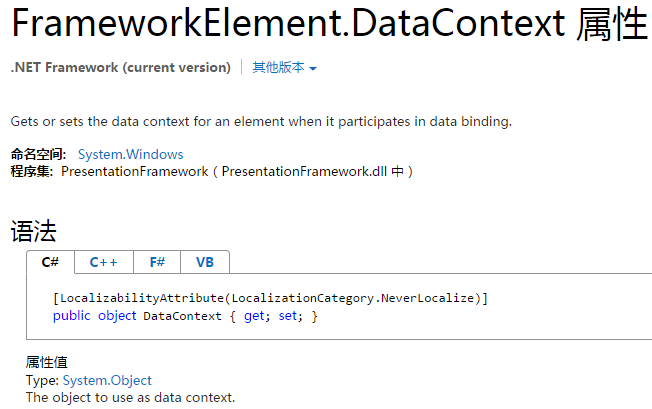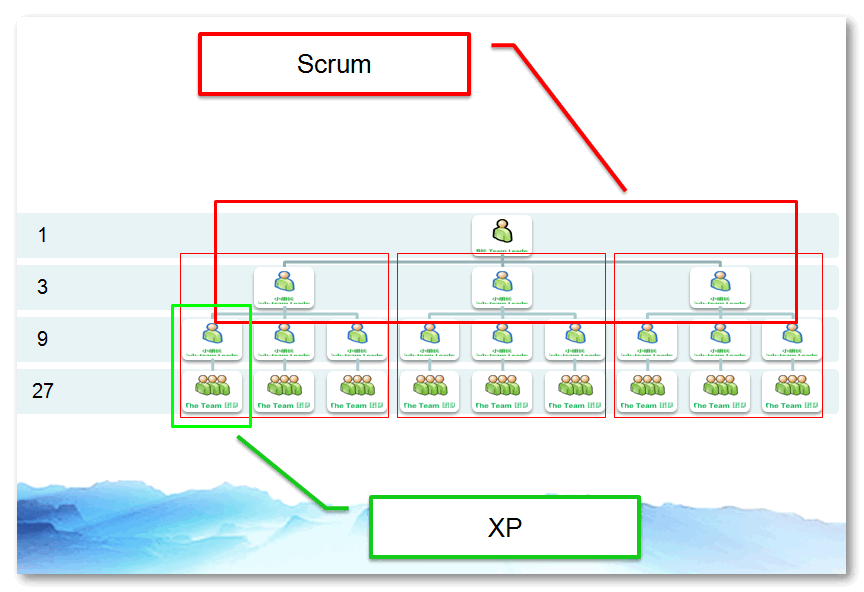SQL Server ODBC
- Standard Security:
"Driver={SQL Server};Server=Aron1;Database=pubs;Uid=sa;Pwd=asdasd;"
- Trusted connection:
"Driver={SQL Server};Server=Aron1;Database=pubs;Trusted_Connection=yes;"
- Prompt for username and password:
oConn.Properties("Prompt") = adPromptAlways
oConn.Open "Driver={SQL Server};Server=Aron1;DataBase=pubs;"
OLE DB, OleDbConnection (.NET)
- Standard Security:
"Provider=sqloledb;Data Source=Aron1;Initial Catalog=pubs;User Id=sa;Password=asdasd;"
- Trusted Connection:
"Provider=sqloledb;Data Source=Aron1;Initial Catalog=pubs;Integrated Security=SSPI;"
(use serverName\instanceName as Data Source to use an specifik SQLServer instance, only SQLServer2000)
- Prompt for username and password:
oConn.Provider = "sqloledb"
oConn.Properties("Prompt") = adPromptAlways
oConn.Open "Data Source=Aron1;Initial Catalog=pubs;"
- Connect via an IP address:
"Provider=sqloledb;Data Source=190.190.200.100,1433;Network Library=DBMSSOCN;Initial Catalog=pubs;User ID=sa;Password=asdasd;"
(DBMSSOCN=TCP/IP instead of Named Pipes, at the end of the Data Source is the port to use (1433 is the default))
SqlConnection (.NET)
Data Shape
- MS Data Shape
"Provider=MSDataShape;Data Provider=SQLOLEDB;Data Source=Aron1;Initial Catalog=pubs;User ID=sa;Password=asdasd;"
Want to learn data shaping? Check out 4GuyfFromRolla's great article about Data Shaping >>
Read more
How to define which network protocol to use
-
Example: "Provider=sqloledb;Data Source=190.190.200.100,1433; Network Library=DBMSSOCN;Initial Catalog=pubs;User ID=sa;Password=asdasd;"
| Name | Network library | | dbnmpntw | Win32 Named Pipes | | dbmssocn | Win32 Winsock TCP/IP | | dbmsspxn | Win32 SPX/IPX | | dbmsvinn | Win32 Banyan Vines | | dbmsrpcn | Win32 Multi-Protocol (Windows RPC) |
Important note! When connecting through the SQLOLEDB provider use the syntax Network Library=dbmssocnand when connecting through MSDASQL provider use the syntax Network=dbmssocn
All SqlConnection connection string properties
-
This table shows all connection string properties for the ADO.NET SqlConnection object. Most of the properties are also used in ADO. All properties and descriptions is from msdn.
| Name | Default | Description |
|---|
| Application Name | | The name of the application, or '.Net SqlClient Data Provider' if no application name is provided. | AttachDBFilename
-or-
extended properties
-or-
Initial File Name | | The name of the primary file, including the full path name, of an attachable database. The database name must be specified with the keyword 'database'. | Connect Timeout
-or-
Connection Timeout | 15 | The length of time (in seconds) to wait for a connection to the server before terminating the attempt and generating an error. | | Connection Lifetime | 0 | When a connection is returned to the pool, its creation time is compared with the current time, and the connection is destroyed if that time span (in seconds) exceeds the value specified by connection lifetime. Useful in clustered configurations to force load balancing between a running server and a server just brought on-line. | | Connection Reset | 'true' | Determines whether the database connection is reset when being removed from the pool. Setting to 'false' avoids making an additional server round-trip when obtaining a connection, but the programmer must be aware that the connection state is not being reset. | | Current Language | | The SQL Server Language record name. | Data Source
-or-
Server
-or-
Address
-or-
Addr
-or-
Network Address | | The name or network address of the instance of SQL Server to which to connect. | | Enlist | 'true' | When true, the pooler automatically enlists the connection in the creation thread's current transaction context. | Initial Catalog
-or-
Database | | The name of the database. | Integrated Security
-or-
Trusted_Connection | 'false' | Whether the connection is to be a secure connection or not. Recognized values are 'true', 'false', and 'sspi', which is equivalent to 'true'. | | Max Pool Size | 100 | The maximum number of connections allowed in the pool. | | Min Pool Size | 0 | The minimum number of connections allowed in the pool. | Network Library
-or-
Net | 'dbmssocn' | The network library used to establish a connection to an instance of SQL Server. Supported values include dbnmpntw (Named Pipes), dbmsrpcn (Multiprotocol), dbmsadsn (Apple Talk), dbmsgnet (VIA), dbmsipcn (Shared Memory) and dbmsspxn (IPX/SPX), and dbmssocn (TCP/IP).
The corresponding network DLL must be installed on the system to which you connect. If you do not specify a network and you use a local server (for example, "." or "(local)"), shared memory is used. | | Packet Size | 8192 | Size in bytes of the network packets used to communicate with an instance of SQL Server. | Password
-or-
Pwd | | The password for the SQL Server account logging on. | | Persist Security Info | 'false' | When set to 'false', security-sensitive information, such as the password, is not returned as part of the connection if the connection is open or has ever been in an open state. Resetting the connection string resets all connection string values including the password. | | Pooling | 'true' | When true, the SQLConnection object is drawn from the appropriate pool, or if necessary, is created and added to the appropriate pool. | | User ID | | The SQL Server login account. | | Workstation ID | the local computer name | The name of the workstation connecting to SQL Server. |
Note Use ; to separate each property. If a name occurs more than once, the value from the last one in the connection string will be used. If you are building your connection string in your app using values from user input fields, make sure the user can't change the connection string by inserting an additional property with another value within the user value.
SQL Server 2005 SQL Native Client ODBC Driver
- Standard security:
"Driver={SQL Native Client};Server=Aron1;Database=pubs;UID=sa;PWD=asdasd;"
- Trusted connection:
"Driver={SQL Native Client};Server=Aron1;Database=pubs;Trusted_Connection=yes;"
Equivalents
Integrated Security=SSPI equals Trusted_Connection=yes
- Prompt for username and password:
oConn.Properties("Prompt") = adPromptAlways
oConn.Open "Driver={SQL Native Client};Server=Aron1;DataBase=pubs;"
- Enabling MARS (multiple active result sets):
"Driver={SQL Native Client};Server=Aron1;Database=pubs;Trusted_Connection=yes;MARS_Connection=yes"
Equivalents
MultipleActiveResultSets=true equals MARS_Connection=yes
Using MARS with SQL Native Client, by Chris Lee >>
- Encrypt data sent over network:
"Driver={SQL Native Client};Server=Aron1;Database=pubs;Trusted_Connection=yes;Encrypt=yes"
- Attach a database file on connect to a local SQL Server Express instance:
"Driver={SQL Native Client};Server=.\SQLExpress;AttachDbFilename=c:\asd\qwe\mydbfile.mdf;Database=dbname;Trusted_Connection=Yes;"
- or -
"Driver={SQL Native Client};Server=.\SQLExpress;AttachDbFilename=|DataDirectory|mydbfile.mdf;Database=dbname;Trusted_Connection=Yes;"
(use |DataDirectory| when your database file resides in the data directory)
Why is the "Database" parameter needed? Answer: If the database was previously attached, SQL Server does not reattach it (it uses the attached database as the default for the connection).
Download the SQL Native Client here >> (the package contains booth the ODBC driver and the OLE DB provider)
Using SQL Server 2005 Express? Don't miss the server name syntax: SERVERNAME\SQLEXPRESS (Substitute "SERVERNAME" with the name of the computer)
SQL Native Client OLE DB Provider
- Standard security:
"Provider=SQLNCLI;Server=Aron1;Database=pubs;UID=sa;PWD=asdasd;"
- Trusted connection:
"Provider=SQLNCLI;Server=Aron1;Database=pubs;Trusted_Connection=yes;"
Equivalents
Integrated Security=SSPI equals Trusted_Connection=yes
- Prompt for username and password:
oConn.Properties("Prompt") = adPromptAlways
oConn.Open "Provider=SQLNCLI;Server=Aron1;DataBase=pubs;"
- Enabling MARS (multiple active result sets):
"Provider=SQLNCLI;Server=Aron1;Database=pubs;Trusted_Connection=yes;MarsConn=yes"
Equivalents
MarsConn=yes equals MultipleActiveResultSets=true equals MARS_Connection=yes
Using MARS with SQL Native Client, by Chris Lee >>
- Encrypt data sent over network:
"Provider=SQLNCLI;Server=Aron1;Database=pubs;Trusted_Connection=yes;Encrypt=yes"
- Attach a database file on connect to a local SQL Server Express instance:
"Provider=SQLNCLI;Server=.\SQLExpress;AttachDbFilename=c:\asd\qwe\mydbfile.mdf;Database=dbname;Trusted_Connection=Yes;" - or -"Provider=SQLNCLI;Server=.\SQLExpress;AttachDbFilename=|DataDirectory|mydbfile.mdf;Database=dbname;Trusted_Connection=Yes;" (use |DataDirectory| when your database file resides in the data directory)
Why is the "Database" parameter needed? Answer: If the database was previously attached, SQL Server does not reattach it (it uses the attached database as the default for the connection).
Download the SQL Native Client here >> (the package contains booth the ODBC driver and the OLE DB provider)
Using SQL Server 2005 Express? Don't miss the server name syntax: SERVERNAME\SQLEXPRESS (Substitute "SERVERNAME" with the name of the computer)
SqlConnection (.NET)
- Standard Security:
"Data Source=Aron1;Initial Catalog=pubs;User Id=sa;Password=asdasd;"
- or -
"Server=Aron1;Database=pubs;User ID=sa;Password=asdasd;Trusted_Connection=False"
(both connection strings produces the same result)
- Trusted Connection:
"Data Source=Aron1;Initial Catalog=pubs;Integrated Security=SSPI;"
- or -
"Server=Aron1;Database=pubs;Trusted_Connection=True;"
(both connection strings produces the same result)
(use serverName\instanceName as Data Source to use an specifik SQLServer instance)
- Connect via an IP address:
"Data Source=190.190.200.100,1433;Network Library=DBMSSOCN;Initial Catalog=pubs;User ID=sa;Password=asdasd;"
(DBMSSOCN=TCP/IP instead of Named Pipes, at the end of the Data Source is the port to use (1433 is the default))
- Enabling MARS (multiple active result sets):
"Server=Aron1;Database=pubs;Trusted_Connection=True;MultipleActiveResultSets=true"
Note! Use ADO.NET 2.0 for MARS functionality. MARS is not supported in ADO.NET 1.0 nor ADO.NET 1.1
Streamline your Data Connections by Moving to MARS, by Laurence Moroney, DevX.com >>
- Attach a database file on connect to a local SQL Server Express instance:
"Server=.\SQLExpress;AttachDbFilename=c:\asd\qwe\mydbfile.mdf;Database=dbname;Database=dbname;Trusted_Connection=Yes;" - or -"Server=.\SQLExpress;AttachDbFilename=|DataDirectory|mydbfile.mdf;Database=dbname;Trusted_Connection=Yes;" (use |DataDirectory| when your database file resides in the data directory)
Why is the "Database" parameter needed? Answer: If the database was previously attached, SQL Server does not reattach it (it uses the attached database as the default for the connection).
- Using "User Instance" on a local SQL Server Express instance:
"Data Source=.\SQLExpress;integrated security=true;attachdbfilename=|DataDirectory|\mydb.mdf;user instance=true;"
The "User Instance" functionality creates a new SQL Server instance on the fly during connect. This works only on a local SQL Server 2005 instance and only when connecting using windows authentication over local named pipes. The purpose is to be able to create a full rights SQL Server instance to a user with limited administrative rights on the computer. To enable the functionality: sp_configure 'user instances enabled','1' (0 to disable)
Using SQL Server 2005 Express? Don't miss the server name syntax: SERVERNAME\SQLEXPRESS (Substitute "SERVERNAME" with the name of the computer)
Context Connection - connecting to "self" from within your CLR stored prodedure/function
- C#:
using(SqlConnection connection = new SqlConnection("context connection=true"))
{
connection.Open();
// Use the connection
}
- Visual Basic:
Using connection as new SqlConnection("context connection=true")
connection.Open()
' Use the connection
End Using
The context connection lets you execute Transact-SQL statements in the same context (connection) that your code was invoked in the first place.
Read more
When to use SQL Native Client?
Access ODBC
- Standard Security:
"Driver={Microsoft Access Driver (*.mdb)};Dbq=C:\mydatabase.mdb;Uid=Admin;Pwd=;"
- Workgroup:
"Driver={Microsoft Access Driver (*.mdb)};Dbq=C:\mydatabase.mdb;SystemDB=C:\mydatabase.mdw;"
- Exclusive:
"Driver={Microsoft Access Driver (*.mdb)};Dbq=C:\mydatabase.mdb;Exclusive=1;Uid=admin;Pwd="
OLE DB, OleDbConnection (.NET)
- Standard security:
"Provider=Microsoft.Jet.OLEDB.4.0;Data Source=\somepath\mydb.mdb;User Id=admin;Password=;"
- Workgroup (system database):
"Provider=Microsoft.Jet.OLEDB.4.0;Data Source=\somepath\mydb.mdb;Jet OLEDB:System Database=system.mdw;"
- With password:
"Provider=Microsoft.Jet.OLEDB.4.0;Data Source=\somepath\mydb.mdb;Jet OLEDB:Database Password=MyDbPassword;"
Oracle ODBC
OLE DB, OleDbConnection (.NET)
OracleConnection (.NET)
- Standard:
"Data Source=MyOracleDB;Integrated Security=yes;"
This one works only with Oracle 8i release 3 or later
- Specifying username and password:
"Data Source=MyOracleDB;User Id=username;Password=passwd;Integrated Security=no;"
This one works only with Oracle 8i release 3 or later
- Declare the OracleConnection:
C#:
using System.Data.OracleClient;
OracleConnection oOracleConn = new OracleConnection();
oOracleConn.ConnectionString = "my connection string";
oOracleConn.Open();
VB.NET:
Imports System.Data.OracleClient
Dim oOracleConn As OracleConnection = New OracleConnection()
oOracleConn.ConnectionString = "my connection string"
oOracleConn.Open()
Missing the System.Data.OracleClient namespace? Download .NET Managed Provider for Oracle >>
Great article! "Features of Oracle Data Provider for .NET" by Rama Mohan G. at C# Corner
Core Labs OraDirect (.NET)
- Standard:
"User ID=scott; Password=tiger; Host=ora; Pooling=true; Min Pool Size=0;Max Pool Size=100; Connection Lifetime=0"
Read more at Core Lab and the product page.
Data Shape
- MS Data Shape:
"Provider=MSDataShape.1;Persist Security Info=False;Data Provider=MSDAORA;Data Source=orac;user id=username;password=mypw"
Want to learn data shaping? Check out 4GuyfFromRolla's great article about Data Shaping >>
MySQL MyODBC
- MyODBC 2.50 Local database:
"Driver={mySQL};Server=localhost;Option=16834;Database=mydatabase;"
- MyODBC 2.50 Remote database:
"Driver={mySQL};Server=data.domain.com;Port=3306;Option=131072;Stmt=;Database=my-database;Uid=username;Pwd=password;"
- MyODBC 3.51 Local database:
"DRIVER={MySQL ODBC 3.51 Driver};SERVER=localhost;DATABASE=myDatabase;USER=myUsername;PASSWORD=myPassword;OPTION=3;"
- MyODBC 3.51 Remote database:
"DRIVER={MySQL ODBC 3.51 Driver};SERVER=data.domain.com;PORT=3306;DATABASE=myDatabase; USER=myUsername;PASSWORD=myPassword;OPTION=3;"
OLE DB, OleDbConnection (.NET)
Connector/Net 1.0 (.NET)
- Standard:
"Server=Server;Database=Test;Uid=UserName;Pwd=asdasd;"
Download the driver at MySQL Developer Zone.
- Specifying port:
"Server=Server;Port=1234;Database=Test;Uid=UserName;Pwd=asdasd;"
Default port is 3306. Enter value -1 to use a named pipe connection.
- Declare the MySqlClient connection:
C#:
using MySql.Data.MySqlClient;
MySqlConnection oMySqlConn = new MySqlConnection();
oMySqlConn.ConnectionString = "Server=Server;Database=Test;Uid=UserName;Pwd=asdasd;";
oMySqlConn.Open();
VB.NET:
Imports MySql.Data.MySqlClient
Dim oMySqlConn As MySqlConnection = New MySqlConnection()
oMySqlConn.ConnectionString = "Server=Server;Database=Test;Uid=UserName;Pwd=asdasd;"
oMySqlConn.Open()
MySqlConnection (.NET)
- eInfoDesigns.dbProvider:
"Data Source=server;Database=mydb;User ID=username;Password=pwd;Command Logging=false"
This one is used with eInfoDesigns dbProvider, an add-on to .NET
- Declare the MySqlConnection:
C#:
using eInfoDesigns.dbProvider.MySqlClient;
MySqlConnection oMySqlConn = new MySqlConnection();
oMySqlConn.ConnectionString = "my connection string";
oMySqlConn.Open();
VB.NET:
Imports eInfoDesigns.dbProvider.MySqlClient
Dim oMySqlConn As MySqlConnection = New MySqlConnection()
oMySqlConn.ConnectionString = "my connection string"
oMySqlConn.Open()
SevenObjects MySqlClient (.NET)
- Standard:
"Host=server; UserName=myusername; Password=mypassword;Database=mydb;"
This is a freeware ADO.Net data provider from SevenObjects
Core Labs MySQLDirect (.NET)
- Standard:
"User ID=root; Password=pwd; Host=localhost; Port=3306; Database=test;Direct=true; Protocol=TCP; Compress=false; Pooling=true; Min Pool Size=0;Max Pool Size=100; Connection Lifetime=0"
Read more at Core Lab and the product page.
Interbase ODBC, Easysoft
ODBC, Intersolv
OLE DB, SIBPROvider
- Standard:
"provider=sibprovider;location=localhost:;data source=c:\databases\gdbs\mygdb.gdb;user id=SYSDBA;password=masterkey"
- Specifying character set:
"provider=sibprovider;location=localhost:;data source=c:\databases\gdbs\mygdb.gdb;user id=SYSDBA;password=masterkey;character set=ISO8859_1"
- Specifying role:
"provider=sibprovider;location=localhost:;data source=c:\databases\gdbs\mygdb.gdb;user id=SYSDBA;password=masterkey;role=DIGITADORES"
Read more about SIBPROvider >>
Read more about connecting to Interbase in this Borland Developer Network article http://community.borland.com/article/0,1410,27152,00.html
IBM DB2 OLE DB, OleDbConnection (.NET) from ms
- TCP/IP:
"Provider=DB2OLEDB;Network Transport Library=TCPIP;Network Address=XXX.XXX.XXX.XXX;Initial Catalog=MyCtlg;Package Collection=MyPkgCol;Default Schema=Schema;User ID=MyUser;Password=MyPW"
- APPC:
"Provider=DB2OLEDB;APPC Local LU Alias=MyAlias;APPC Remote LU Alias=MyRemote;Initial Catalog=MyCtlg;Package Collection=MyPkgCol;Default Schema=Schema;User ID=MyUser;Password=MyPW"
IBM's OLE DB Provider (shipped with IBM DB2 UDB v7 or above)
ODBC
Sybase ODBC
- Standard Sybase System 12 (or 12.5) Enterprise Open Client:
"Driver={SYBASE ASE ODBC Driver};Srvr=Aron1;Uid=username;Pwd=password"
- Standard Sybase System 11:
"Driver={SYBASE SYSTEM 11};Srvr=Aron1;Uid=username;Pwd=password;Database=mydb"
For more information check out the Adaptive Server Enterprise Document Sets
- Intersolv 3.10:
"Driver={INTERSOLV 3.10 32-BIT Sybase};Srvr=Aron1;Uid=username;Pwd=password;"
- Sybase SQL Anywhere (former Watcom SQL ODBC driver):
"ODBC; Driver=Sybase SQL Anywhere 5.0; DefaultDir=c:\dbfolder\;Dbf=c:\mydatabase.db;Uid=username;Pwd=password;Dsn="""""
Note! The two double quota following the DSN parameter at the end are escaped quotas (VB syntax), you may have to change this to your language specific escape syntax. The empty DSN parameter is indeed critical as not including it will result in error 7778.
Read more in the Sybase SQL Anywhere User Guide (see part 3, chapter 13) >>
OLE DB
- Adaptive Server Anywhere (ASA):
"Provider=ASAProv;Data source=myASA"
Read more in the ASA User Guide (part 1, chapter 2) >>
- Adaptive Server Enterprise (ASE) with Data Source .IDS file:
"Provider=Sybase ASE OLE DB Provider; Data source=myASE"
Note that you must create a Data Source .IDS file using the Sybase Data Administrator. These .IDS files resemble ODBC DSNs.
- Adaptive Server Enterprise (ASE):
"Provider=Sybase.ASEOLEDBProvider;Srvr=myASEserver,5000;Catalog=myDBname;User Id=username;Password=password" - some reports on problem using the above one, try the following as an alternative -"Provider=Sybase.ASEOLEDBProvider;Server Name=myASEserver,5000;Initial Catalog=myDBname;User Id=username;Password=password"
This one works only from Open Client 12.5 where the server port number feature works,?allowing fully qualified connection strings to be used without defining?any .IDS Data Source files.
AseConnection (.NET)
Informix ODBC
- Informix 3.30:
"Dsn='';Driver={INFORMIX 3.30 32 BIT};Host=hostname;Server=myserver;Service=service-name;Protocol=olsoctcp;Database=mydb;UID=username;PWD=myPwd
- Informix-CLI 2.5:
"Driver={Informix-CLI 2.5 (32 Bit)};Server=myserver;Database=mydb;Uid=username;Pwd=myPwd"
OLE DB
Ingres ODBC
Mimer SQL ODBC
Lightbase Standard
PostgreSQL Core Labs PostgreSQLDirect (.NET)
- Standard:
"User ID=root; Password=pwd; Host=localhost; Port=5432; Database=testdb;Pooling=true; Min Pool Size=0; Max Pool Size=100; Connection Lifetime=0"
Read more at Core Lab and the product page.
PostgreSQL driver
Npgsql by pgFoundry (.NET)
Paradox ODBC
- 5.X:
Driver={Microsoft Paradox Driver (*.db )};DriverID=538;Fil=Paradox 5.X;DefaultDir=c:\pathToDb\;Dbq=c:\pathToDb\;CollatingSequence=ASCII"
- 7.X:
"Provider=MSDASQL.1;Persist Security Info=False;Mode=Read;Extended Properties='DSN=Paradox;DBQ=C:\myDb;DefaultDir=C:\myDb;DriverId=538;FIL=Paradox 7.X;MaxBufferSize=2048;PageTimeout=600;';Initial Catalog=C:\myDb"
OleDbConnection (.NET)
- Standard
"Provider=Microsoft.Jet.OLEDB.4.0;Data Source=c:\myDb;Extended Properties=Paradox 5.x;"
MS kb-article: How to use Paradox data with Access and Jet >>
DSN ODBC
Firebird ODBC - IBPhoenix Open Source
- Standard:
"DRIVER=Firebird/InterBase(r) driver;UID=SYSDBA;PWD=masterkey;DBNAME=D:\FIREBIRD\examples\TEST.FDB"
IBPhoenix ODBC; More info, download etc >>
.NET - Firebird .Net Data Provider
- Standard:
"User=SYSDBA;Password=masterkey;Database=SampleDatabase.fdb;DataSource=localhost;Port=3050;Dialect=3;Charset=NONE;Role=;Connection lifetime=15;Pooling=true;MinPoolSize=0;MaxPoolSize=50;Packet Size=8192;ServerType=0"
Firebird ADO.NET project >>
Firebird ADO.NET downloads >>
Excel ODBC
OLE DB
- Standard:
"Provider=Microsoft.Jet.OLEDB.4.0;Data Source=C:\MyExcel.xls;Extended Properties=""Excel 8.0;HDR=Yes;IMEX=1"""
"HDR=Yes;" indicates that the first row contains columnnames, not data
"IMEX=1;" tells the driver to always read "intermixed" data columns as text
TIP! SQL syntax: "SELECT * FROM [sheet1$]" - i.e. worksheet name followed by a "$" and wrapped in "[" "]" brackets.
Text ODBC
OLE DB
- Standard:
"Provider=Microsoft.Jet.OLEDB.4.0;Data Source=c:\txtFilesFolder\;Extended Properties=""text;HDR=Yes;FMT=Delimited"""
"HDR=Yes;" indicates that the first row contains columnnames, not data
DBF / FoxPro ODBC
OLE DB, OleDbConnection (.NET)
AS/400 (iSeries) OLE DB, OleDbConnection (.NET)
ODBC
Exchange OLE DB
- Exchange OLE DB provider:
"ExOLEDB.DataSource"
Specify store in the connection open command like this: conn.open "http://servername/mypublicstore"
Check out this article at msdn >> and this one at Addison-Wesley >>
Visual FoxPro OLE DB, OleDbConnection (.NET)
- Database container (.DBC):
"Provider=vfpoledb.1;Data Source=C:\MyDbFolder\MyDbContainer.dbc;Collating Sequence=machine"
- Free table directory:
"Provider=vfpoledb.1;Data Source=C:\MyDataDirectory\;Collating Sequence=general"
- Force the provider to use an ODBC DSN:
""Provider=vfpoledb.1;DSN=MyDSN""
Read more (Microsoft msdn) >>
ODBC
Microsoft Visual Foxpro site: http://msdn.microsoft.com/vfoxpro
Pervasive ODBC
- Standard:
"Driver={Pervasive ODBC Client Interface};ServerName=srvname;dbq=@dbname"
Pervasive ODBC info >>
OLE DB
- Standard:
"Provider=PervasiveOLEDB;Data Source=C:\path"
Pervasive OLE DB info >>
UDL UDL
|



